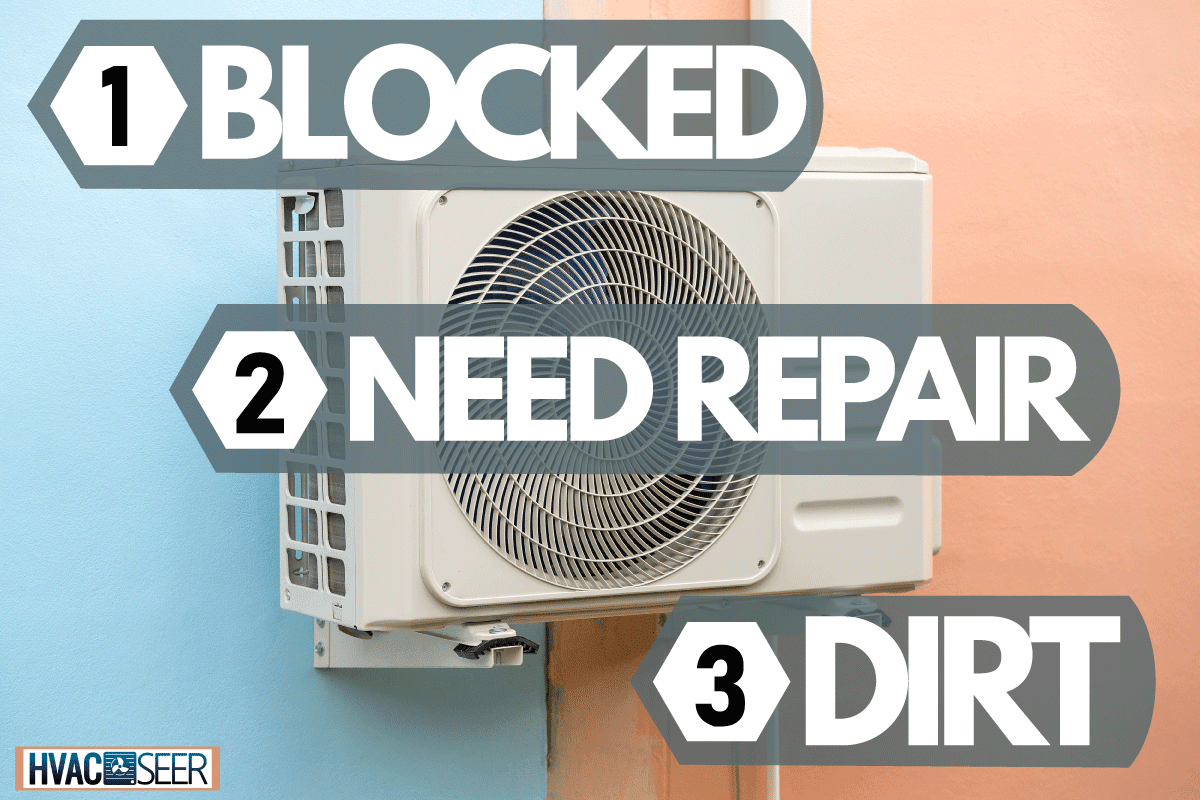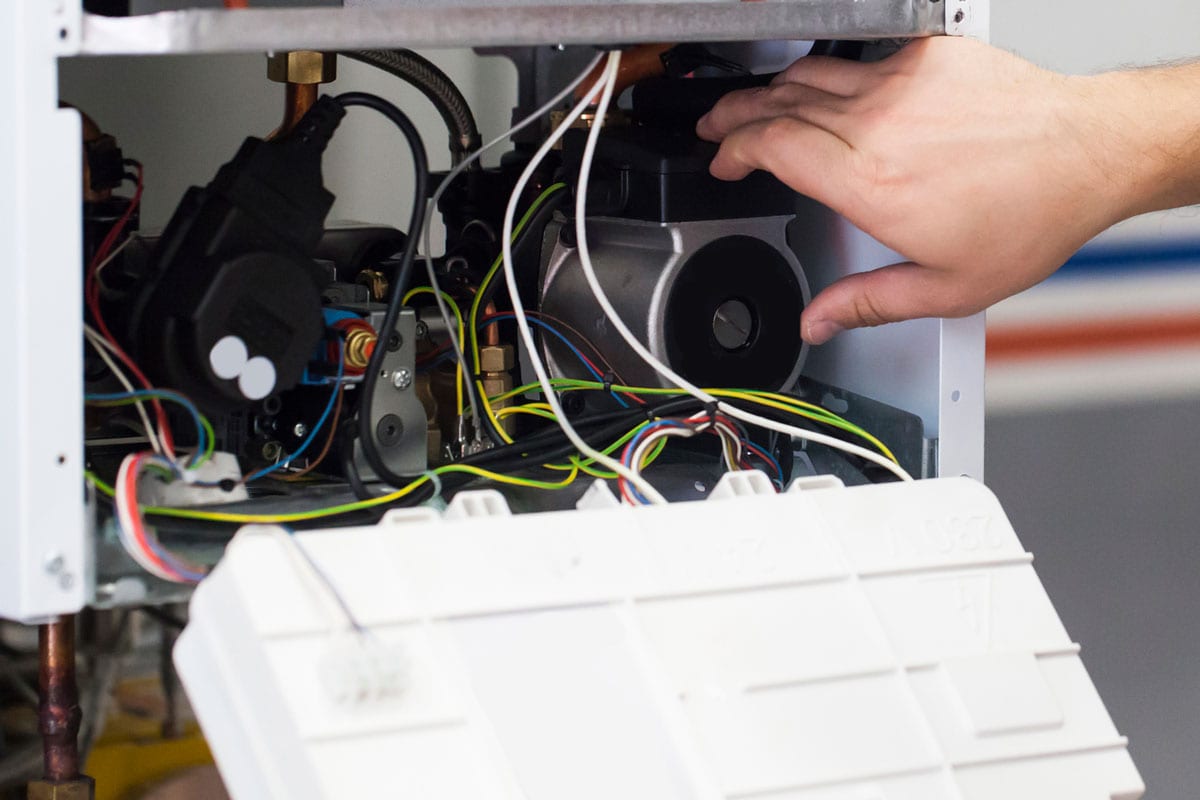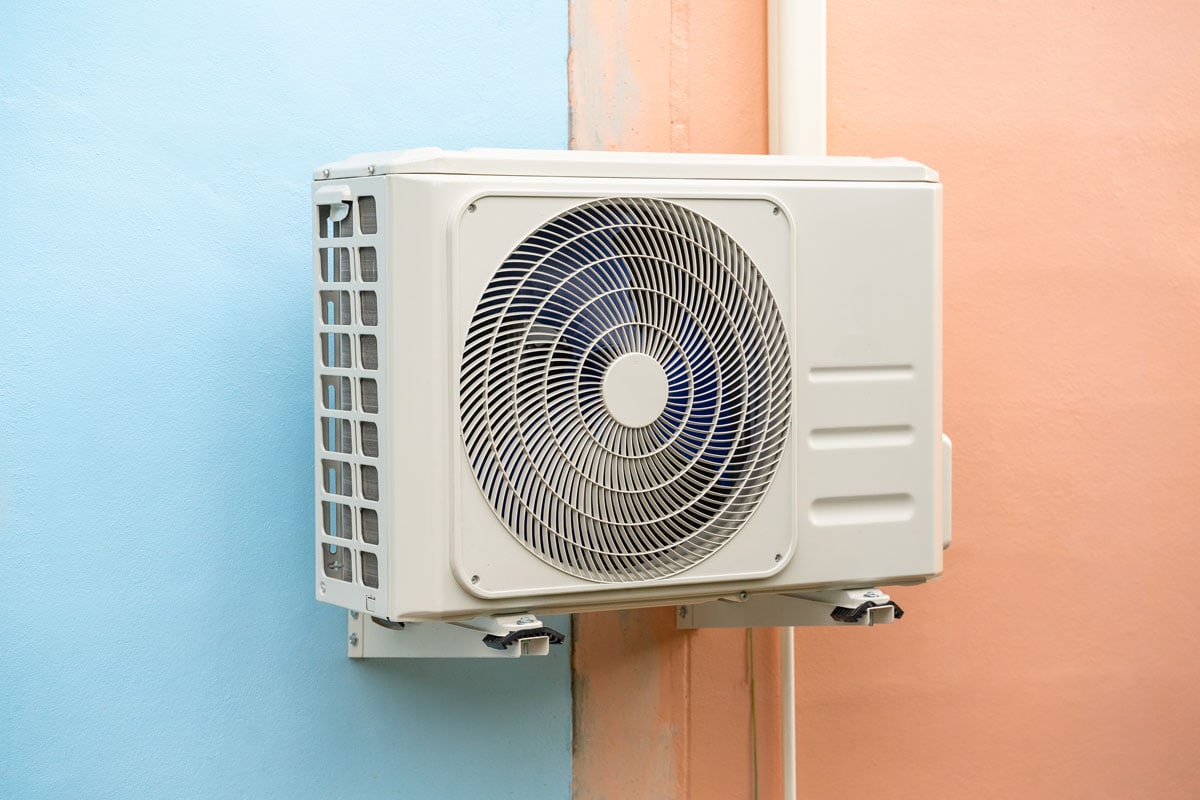A condensate pump is an essential part of any HVAC system. Sometimes it can develop a leak leading to a water spill that can be breeding grounds for mold. If you're a homeowner wondering why your condensate pump leaks, you're at the right place. We took the time to research this issue thoroughly, and here are our findings.
A condensate pump leaks for many reasons, but the most common reasons include:
- The condensate pump is blocked
- It is overfilled with dirt
- The condensate pump has damaged parts that need repair
To learn more details, keep reading, as we will talk about the different parts of a condensate pump, why it leaks and how to fix it.

What is a Condensate Pump?
A condensate pump is an electrically powered accessory part of an air conditioning system used to transport water out of the system. It helps to remove water and other liquids from the air, which are then cooled and collected in a storage tank. These are typically installed outside buildings to prevent moisture buildup and damage.
Pumps can be used for many different purposes, including cooling, heating, humidification, dehumidification, ventilation, and more. Condensate pumps are also commonly found in HVAC systems.
Parts of a Condensate Pump
A condensate pump usually comprises three major parts: the reservoir, the floating switch, and the pump.
The Reservoir
The first part of a condensate pump is the reservoir. This is the part of the condensate pump that holds water. A reservoir can hold between one to one and a half gallons of water.
The Floating Switch
This compartment communicates with the pump indicating the need to transport water out of the air conditioning system as soon as the water in the reservoir accumulates to a certain level.
Pump
This is the essential component of the condensate pump, which drives water out of the system through a plastic duct outside of the house.
Uses of a Condensate Pump
Usually, it is possible to remove water from an air conditioning system through natural methods. You do this by fixing the system so that water can be removed through the force of gravity.
On occasions that driving water through gravity is impossible or undesirable (this would be the case if you installed the air conditioning system indoors or in your basement). A condensate pump will be used to drive water in the air-conditioning system out of the residence. In this case, the condensation will be driven through or to the ground level outside your residence.
Causes of Leaking Condensate Pump
There are three reasons why there may be a leak in your condensate pump: blockage, faulty parts, or dirt.
Blockage
If there is a blockage in your pump, your condensate pump may be unable to drive water in the air conditioning out of your residence. This blockage can occur when freezing ice accumulates in the evaporation coils.
The unfreezing ice means more water for your condensate pump, which can block the pump. Similarly, due to the continuous presence of water, micro-organisms such as algae, fungi, mold, etc., can form in the condensate pump and block it.
Faulty Parts
Faulty parts in your condensate pump are another reason why your condensate pump may be leaking. Two types of fault can exist in a condensate pump, preventing it from functioning: faulty installation and equipment failure.
Faulty Installations
The fault in a condensate pump may be caused by faulty installation. A faulty installation may prevent the pump from functioning at all or optimally. When excess water builds up in the pump, this can cause leaking.
Equipment Failure
The fault in a condensate pump may also be due to equipment failure. This could be due to any reason, including using substandard parts during repair.
Dirt
Dirt is another minor reason why your condensate pump may be leaking. This is because dirt can interfere with the functioning of the condensate pump and cause it to leak.
How to Avoid Leaks From Condensation Pump
Following the causes of leaks, these necessary steps you can take to avoid leakage include the following.
- Remove blockage or dirt in the pump by cleaning it every six months.
- You should ensure that the condensate pump is properly installed.
- Employ the service of an HVAC professional to examine the pump every twelve months.
How Long Should A Condensate Pump Last?

How long a condensate pump lasts depends on several variables. One of such variables is the quality of the condensate pump. Condensate pumps of high quality tend to last longer than condensate pumps of low quality.
The usage of the condensate pump is also another essential factor. A condensate pump you use with care and maintenance would last longer than another you used without much maintenance.
While the lifespan of a condensate pump may vary based on quality and use, most users agree that a condensate pump should last between three to five years. If you're unsure if you should buy a new pump or replace the old one, you should compare how many years you have used your condensate pump and if the repair would be worth it in the long run.
Should You Repair or Replace Your Condensate Pump?
There are several factors you should consider in deciding whether you should repair or replace your condensate pump. The state of your condensate pump is one very significant factor you should take into account in making this decision.
If your condensate pump is riding with holes or has various broken parts, you should replace it and not repair it. If it is still in fairly good shape, you may want to repair it. Other factors include
Cause of Damage/Leaks
The cause of leaking is the second element you should take into account. As we have noted, there are several causes of leaking in a condensate pump. You should inquire into the cause of the leaks in your system and reach the appropriate resolution.
If there is just dirt in your pump, you might open it and clean it. If the cause of leaking is a severe malfunction, you should seek to replace it rather than repair it.
Length of Usage
The amount of time you have been using your condensate pump should be considered. If you have been using your pump for over three years, you should consider getting a new one, considering that the average lifespan of a condensate pump is three to five years.
Cost
Cost is another factor you would need to consider. To repair a condensate pump, you would require the assistance of a professional. The cost of reconditioning a condensate pump with its part ranges between $145 to $210. Replacing a condensate pump also means paying a technician for their services.
The average cost of replacing a pump is $350 to $390. You need to consider your financial capacity with all other factors mentioned above to make a truly informed and cost-effective decision.
Thus, you should replace or repair your condensate pump depending on its state, the cause of leaking, years of use, and cost-effectiveness. Repairing your condensate pump is usually the best option for you, especially if the damage done to the condensate pump is only minimal. But you might just want to get a new quality one to avoid further repairs.
You can have a professional examine your condensate pump and decide if a repair or a replacement would be the best option for you.
Can You Unplug a Condensate Pump?

Yes, you can unplug a condensate pump. It is important to note that it will no longer function if you unplug a condensate pump. If you continue to use the air conditioning system with the condensate pump detached, you risk flooding your living space.
Thus, you should only unplug your condensate pump if you do not intend to use your air conditioning system. Also, you can unplug your condensate pump if you want to replace or repair it.
Here is a step-by-step procedure to unplug a condensate pump.
- Switch off the power at the main breaker box.
- Detach the PVC duct from the reservoir.
- Detach the drain line and pour the water into another container.
- Detach the condensate pump and place it in a very safe place.
Conclusion

The condensate pump moves the water vapor in the air to a lower part of the building, where it can be discharged into drains or outside. Condensate pumps can be damaged by water, pests, or dust particles. When this happens, you should first inspect the pump for damage and then fix it as soon as possible.
If you liked reading this, check out our related posts on condensate pumps:
